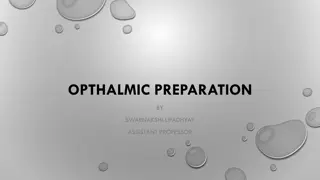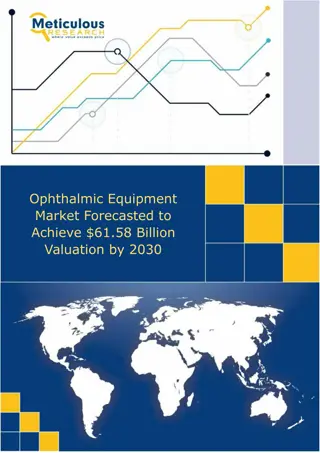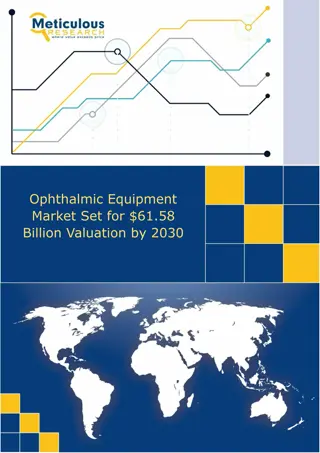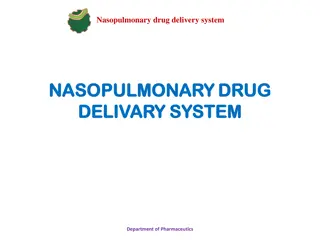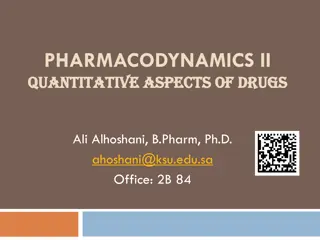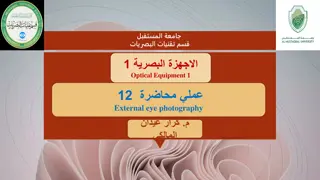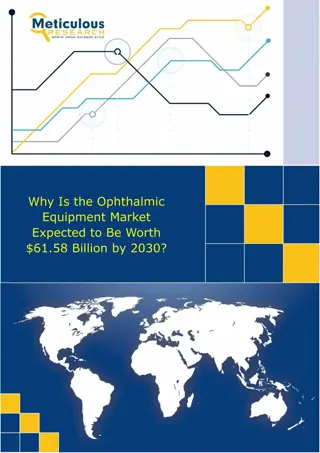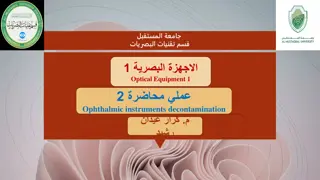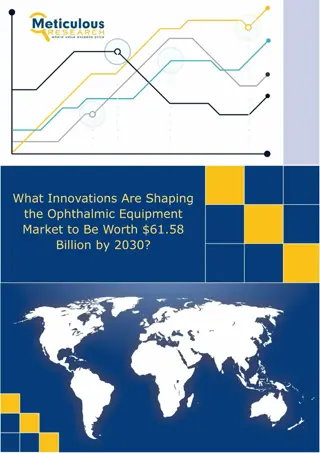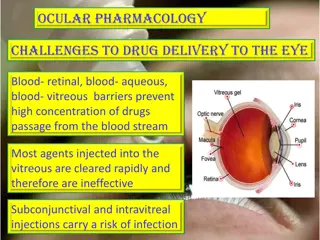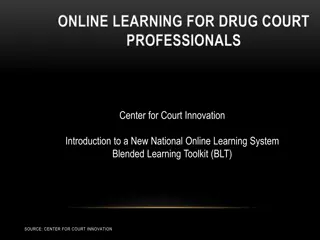Advances in Ophthalmic Drug Delivery Systems
This content explores various advanced ophthalmic drug delivery systems including erodible ophthalmic inserts, soluble ocular drug inserts, new ophthalmic drug delivery systems, and bioadhesive ophthalmic drug inserts. These innovative systems aim to provide accurate dosing, prolonged drug release, and enhanced treatment outcomes for eye conditions such as glaucoma and keratitis.
Download Presentation

Please find below an Image/Link to download the presentation.
The content on the website is provided AS IS for your information and personal use only. It may not be sold, licensed, or shared on other websites without obtaining consent from the author.If you encounter any issues during the download, it is possible that the publisher has removed the file from their server.
You are allowed to download the files provided on this website for personal or commercial use, subject to the condition that they are used lawfully. All files are the property of their respective owners.
The content on the website is provided AS IS for your information and personal use only. It may not be sold, licensed, or shared on other websites without obtaining consent from the author.
E N D
Presentation Transcript
Adv. Biopharmaceutics Dr. Mohammed Sabbar College Of Pharmacy - Basrah 3rdOct. 2018 http://bit.do/ex2aD
E.g. Elza-ocusert: Pilocarpine molecules are then released at a constant rate of 20- 40microgram/h for 4to 7 days used for management of glaucoma
The primary approaches in the design of control release ODDS 2. Erodible ophthalmic insert: The marketed devices of erodible drug inserts are Lacriserts, SODI, and Minidisc. Lacrisert is useful in the treatment of keratitis whose symptoms are difficult to treat with artificial tear alone. It is inserted into the inferior fornix where it imbibes water from the conjunctiva and cornea, forms a hydrophilic film which stabilizes the tear film and hydrates and lubricates the cornea. It dissolves in 24 hours.
The primary approaches in the design of control release ODDS b. SODI: Soluble Ocular Drug Insert is a small oval wafer developed for cosmonauts who could not use eye drops in weightless conditions. It is sterile thin film of oval shape made from acrylamide, N-vinylpyrrolidone and ethylacrylate called as ABE. It weighs about 15-16 mg. It is used in the treatment of glaucoma and trachoma. It is inserted into the inferior cul-de-sac and get wets and softens in 10-15 seconds. After 10-15 min the film turns into a viscous polymer mass, after 30-60 minutes it turns into polymer solutions and delivers the drug for about 24hours. c. Minidisc: The minidisc consists of a contoured disc with a convex front and concave back surface in the contact with the eyeball. It is like a miniature contact lens with a diameter of 4-5mm. The minidisc is made up of silicone based prepolymer- - -bis (4-methacryloxy) butyl polydimethyl siloxane. Minidisc can be hydrophilic or hydrophobic to permit extend release of both water soluble and insoluble drugs.
3. New Ophthalmic Drug Delivery System: The New Ophthalmic Drug Delivery System (NODDS) is a method of presenting drugs to the eye within a water soluble drug loaded film. It provides accurate, reproducible dosing in an easily administered preservative free form. 4. Bio adhesive Ophthalmic Drug Inserts: These are soluble inserts made of synthetic and semi synthetic polymers. They are composed of ternary mixture of hydroxypropylcellulose, ethylcellulose and carbomer (Carbapol 934P). These are developed to overcome the drawback of available inserts which are sometimes displaced or expelled by eyeball movements. These are rod shaped inserted obtained by the extrusion of a dried homogeneous powder mixture composed of the polymeric vehicle and the active compound using a specially designed ram extruder.
F. Corneal collagen shields: Collagen is a structural protein than can be applied safely to the body for medical purpose. The creation of collagen shield has provided a means to promote wound healing and perhaps more importantly to deliver a variety of modifications to the cornea and other ocular tissues. The preparation of collagen shields includes extraction of the collagen and moulding of collagen into a contact lens configuration. The shields are 14.5 mm in diameter with a 9 mm base curve and thickness of 0.15- 0.19 mm. The shields are sterilized by gamma irradiation then dehydrated and individually packaged for storage. Drugs can be incorporated into collagen matrix during manufacture absorbed into the shields in the eye. As the shield dissolves the drug is released gradually in the tear film and into the aqueous humor. The simplicity of use and the convenience afforded by shields make them an attractive delivery device. G. Implants Scleral and vitreal implants are developed for treatment of endophthalmitis. Implants made from poly lactide/glycolide polymers can result in drug release over 5-6 month period without the need for replacement. It is shown


